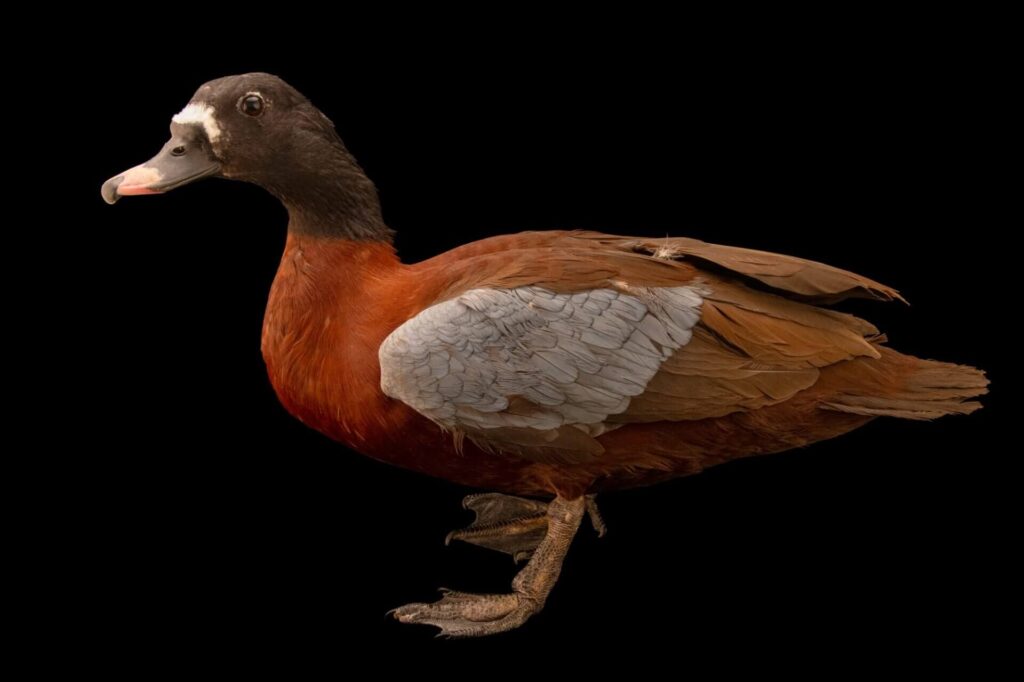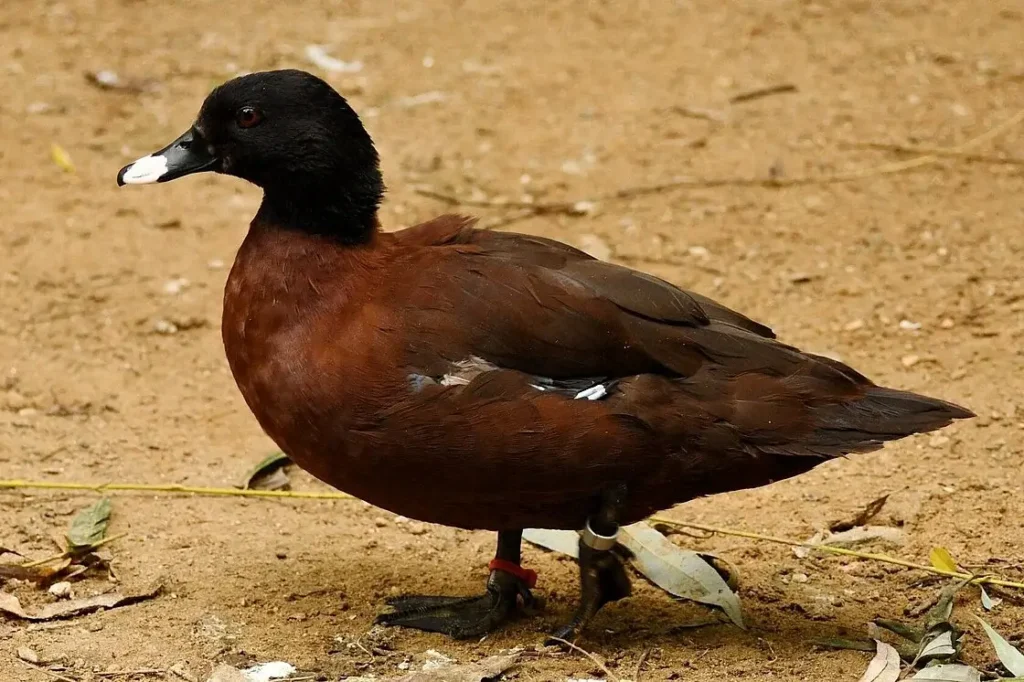Hartlaub’s Duck


Scientific name
Pteronetta hartlaubii
Alternative names
Hartlaub’s Duck
Measurements
| Feature | Range / Note |
|---|---|
| Length | 56–58 cm |
| Male Weight | 925–1,140 g |
| Female Weight | 770–805 g |
| Wingspan | ~85–95 cm (estimated) |
Status
Least Concern. Although the population is declining slightly, its extensive range and stable numbers prevent it from being considered threatened.
Identification
A dark chestnut duck with a distinctive blue wing patch. Males have white heads and reddish-brown eyes, while females have mostly dark heads and dark red eyes. Juveniles have pale-tipped feathers on the breast and abdomen. During mating season, the male’s bill base enlarges.
Behavior
Usually active in the early morning and evening. They quack “ko-ko-ko-ko” or “kakakakarr” in flight, with “whit-whit-whit” as conversational sounds. When threatened, males emit a fast “wheezy whistle.” Juveniles in distress make three descending notes.
Distribution
Resident in equatorial West and Central Africa: Guinea, Sierra Leone, Nigeria, South Sudan, Gabon, Congo, and the Democratic Republic of Congo.
Habitat
Lives in swampy marshes, tropical forests, savannas, rivers, and streams. In Liberia, they occupy mangroves. They form flocks only from January to May in Liberia.
Wintering
Non-migratory. In drier or colder months, Hartlaub’s Ducks stay in sheltered forested areas or along perennial rivers and streams where food is available year-round.
Feeding
Feeds on aquatic invertebrates such as insects and crustaceans, seeds, and larvae. Notably, in some regions, they consume insects from elephant dung and remove ectoparasites by perching on bongo or forest buffalo.
Breeding
Mates during the rainy season, typically June to September. Nests are not well-documented.
- Eggs: Cream-colored
- Chicks: Sooty-black heads, yellowish bodies, with orange tinge on chin, neck, and face; weigh 35–46 g at hatching
Conservation
Threats include deforestation, hunting, water pollution from mining and poison-fishing, and use in traditional medicine in Nigeria. Despite these pressures, the species remains widespread and is not currently considered at risk.
